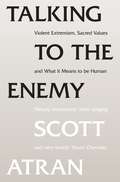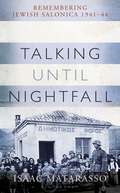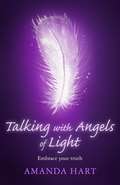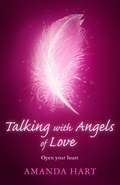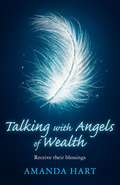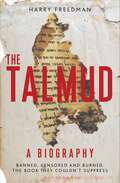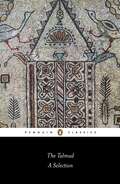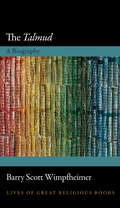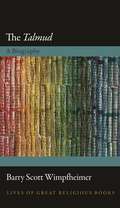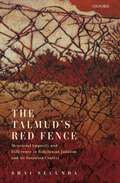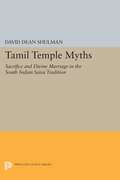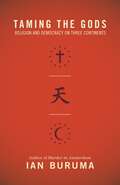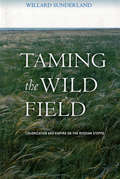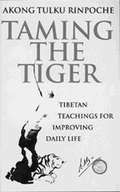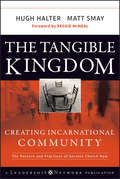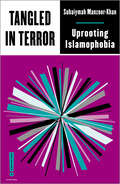- Table View
- List View
Talking to the Enemy: Violent Extremism, Sacred Values, and What it Means to Be Human
by Scott AtranTalking to the Enemy is an intellectually and personally courageous exploration of one of the most contentious issues of modern times. Scott Atran has spent years talking to terrorists - from Gaza and Afghanistan, to Indonesia and Europe - in order to help us understand and mitigate the rise of religious violence. Here he argues persuasively that we need to consider terrorists' close relationships, with family and friends, as much as the causes they espouse, and delivers a fascinating journey into the mindsets of radicalised people in the twenty-first century. Along the way, he also provides deep insights into the history of all religions, and into their evolutionary origins. He shows us, above all, how we have come to be human.More than any other book, Talking to the Enemy invites us to empathise; it is itself the best possible example of how to do it.
Talking to the Other: Jewish Interfaith Dialogue with Christians and Muslims
by Jonathan MagonetSuicide killings - both in American and Israel - have focused world attention on international terrorism and the need both to understand its causes and combat it through all possible means. But the involvement of people claiming that their Islamic faith justified murderous suicide action has intensified demonisation of Islam in the west and in turn highlighted the need to understand and relate to Muslims in all their diversity. For a rabbi, confronted on a daily basis with the conflict between Israelis and Palestinians, the importance of a dialogue between Jews and Muslims is of obvious importance. Because Jews and Muslims share the experience of being minority religious communities in Europe, they have parallel experiences and needs. Moreover, both have to address the impact of the Middle East conflict on their own communities. Rabbi Jonathan Magonet has long been engaged in such interfaith dialogue. For over thirty years he has organised the annual Jewish-Christian-Muslim student conference in Basle, and has lectured on these themes and participated himself in interfaith conferences all over the world. In this book he explores the issues that arise in such an encounter, the traps that so easily hinder relationships, and the historical and theological problems to be confronted once a basis of trust has been established. As well as examining specific areas that need to be addressed in the Jewish encounter with Christians and Muslims, he challenges the Jewish community to broaden its commitment to interfaith dialogue in a complex and rapidly changing world.
Talking Until Nightfall: Remembering Jewish Salonica, 1941–44
by Isaac Matarasso'Whoever listens to a witness, becomes a witness.' – Elie WieselWhen Nazi occupiers arrived in Greece in 1941, it was the beginning of a horror that would reverberate through generations. In the city of Salonica (Thessaloniki), almost 50,000 Jews were sent to Nazi concentration camps during the war, and only 2,000 returned. A Jewish doctor named Isaac Matarasso and his son escaped imprisonment and torture at the hands of the Nazis and joined the resistance. After the city's liberation they returned to rebuild Salonica and, along with the other survivors, to grapple with the near-total destruction of their community. Isaac was a witness to his Jewish community's devastation, and the tangled aftermath of grief, guilt and grace as survivors returned home. Talking Until Nightfall presents his account of the tragedy and his moving tribute to the living and the dead. His story is woven together with his son Robert's memories of being a frightened teenager spared by a twist of fate, with an afterword by his grandson Francois that looks back on the survivors' stories and his family's place in history. This slim, wrenching account of loss, survival, and the strength of the human spirit will captivate readers and ensure the Jews of Salonica are never forgotten.
Talking Until Nightfall: Remembering Jewish Salonica, 1941–44
by Isaac Matarasso'Whoever listens to a witness, becomes a witness.' – Elie WieselWhen Nazi occupiers arrived in Greece in 1941, it was the beginning of a horror that would reverberate through generations. In the city of Salonica (Thessaloniki), almost 50,000 Jews were sent to Nazi concentration camps during the war, and only 2,000 returned. A Jewish doctor named Isaac Matarasso and his son escaped imprisonment and torture at the hands of the Nazis and joined the resistance. After the city's liberation they returned to rebuild Salonica and, along with the other survivors, to grapple with the near-total destruction of their community. Isaac was a witness to his Jewish community's devastation, and the tangled aftermath of grief, guilt and grace as survivors returned home. Talking Until Nightfall presents his account of the tragedy and his moving tribute to the living and the dead. His story is woven together with his son Robert's memories of being a frightened teenager spared by a twist of fate, with an afterword by his grandson Francois that looks back on the survivors' stories and his family's place in history. This slim, wrenching account of loss, survival, and the strength of the human spirit will captivate readers and ensure the Jews of Salonica are never forgotten.
Talking with Angels of Light: Embrace your Truth
by Amanda HartAmanda Hart was rescued by guardian angels as a child and from thence on they became a beacon of hope throughout her turbulent journey into womanhood. The illuminating conversations she has with her angels remain an important aspect of her everyday life, bringing her continual support and spiritual fulfilment. She now dedicates her life to helping others connect with their own angels, helping them to find deeper meaning and happiness in their lives.Talking with Angels of Light is a book for you if the values and beliefs that have guided your life so far are based on destructive relationships, negative emotions or traumatic experiences from your past. Amanda Hart will teach you how to open your heart and allow your angels to save you from darkness and bring you into the light where you belong.The book includes meditations to connect with your angels of light, space to record the blessings they send you and real accounts of angelic assistance granted to Amanda and her clients over the years. There are also practical exercises, Amanda calls 'Your Lightbulb Moments' that will make you more aware of the brilliance in the world around you. Soon you will emerge from the shadows of despair and shine like the purest light in the universe, glowing from the inside out.
Talking with Angels of Love: Open your Heart
by Amanda HartThere was once a time in Amanda Hart's life when she did not know how to be secure in her own worth, was a stranger to self-love and found herself constantly trapped in a cycle of toxic relationships, coercive control and an overwhelming sense of lonliness. Somehow she summoned enough faith to form an astonishing connection with her guardian angels, which became the only remedy for emotional trauma she experienced from early childhood into adulthood.Amanda's angels taught her that we are all worthy of an authentic, non-judgemental love. Now she devotes her life to helping others open their hearts and receive angelic assistance. Talking with Angels of Love will show you how to accept your circumstances, love the skin you are in and recognise the difference between healthy love and toxic love. Filled with practical exercises, meditations to channel your angels' love, pages to record their loving messages and touching real-life stories about the healing power of love, this book will soothe your soul and help you to trust the goodness in others again. Amanda believes that if you open your heart to the angels their love is everlasting, and you will never be lonely again.
Talking with Angels of Wealth: Receive their blessings
by Amanda HartAmanda Hart was rescued by guardian angels as a child and from thence on they became a beacon of hope throughout her turbulent journey into womanhood. The illuminating conversations she has with her angels remain an important aspect of her everyday life, bringing her continual support and spiritual fulfillment. She now dedicates her life to helping others connect with their own angels, helping them to find deeper meaning and happiness in their lives.From the author of Talking with Angels of Light comes another empowering and life-altering book. Amanda Hart's connection with her guardian angels has taught her how to unlock her power, purpose and voice when it comes to financial matters. By following practical exercises, meditations and reading real-life anecdotes this book will guide you towards a healthy, revitalised relationship with money.
The Talmud: A Biography - Banned, Censored and Burned, The Book They Couldn't Suppress
by Harry FreedmanContaining nearly two million words in 37 volumes, the Talmud covers topics as diverse as law, faith, medicine, magic, ethics, sex, humour and prayer. It is a highly complex, profoundly logical and frequently impenetrable work with a history like no other. In its 1500 year history the Talmud has been banned, censored and burned, dissected by scholars and rabbis, probed by philosophers, poets, republicans and kings. In The Talmud – A Biography, Jewish scholar Harry Freedman tells the engrossing story of an ancient classic, the legal and mystical pillar of Judaism and recounts the story of a book which, in many ways, parallels the history of the Jewish people. From its origins as a record of discussions amongst scholars in towns and villages close to modern-day Baghdad, Freedman traces the spiraling paths of the Jewish diaspora and explores the story of the Talmud's early origins in Babylon, its role during the Enlightenment and its influence over traditional Judaism. A compelling fusion of law, storytelling and spirituality, the Talmud's story is a fascinating insight into the history of Judaism and Harry Freedman's The Talmud – A Biography is a remarkable account of one of the most important cultural, historical and religious works of our time.
The Talmud: A Selection
by Norman SolomonThe Talmud is one of the most significant religious texts in the world, second only to the Bible in its importance to Judaism. As the Bible is the word of God, The Talmud applies that word to the lives of its followers. In a range of styles including commentary, parables, proverbs and anecdotes, it provides guidance on all aspects of everyday life from ownership to commerce to relationships. This selection of its most illuminating passages makes accessible the centuries of Jewish thought within The Talmud.Norman Solomon's clear translation from the Bavli (Babylonian) Talmud is accompanied by an introduction on its arrangement, social and historical background, reception and authors. This edition also includes appendixes of background information, a glossary, time line, maps and indexes.
The "Talmud": A Biography (Lives of Great Religious Books)
by Barry Scott WimpfheimerThe life and times of an enduring work of Jewish spiritualityThe Babylonian Talmud, a postbiblical Jewish text that is part scripture and part commentary, is an unlikely bestseller. Written in a hybrid of Hebrew and Aramaic, it is often ambiguous to the point of incomprehension, and its subject matter reflects a narrow scholasticism that should hardly have broad appeal. Yet the Talmud has remained in print for centuries and is more popular today than ever. Barry Scott Wimpfheimer tells the remarkable story of this ancient Jewish book and explains why it has endured for almost two millennia.Providing a concise biography of this quintessential work of rabbinic Judaism, Wimpfheimer takes readers from the Talmud's prehistory in biblical and second-temple Judaism to its present-day use as a source of religious ideology, a model of different modes of rationality, and a totem of cultural identity. He describes the book's origins and structure, its centrality to Jewish law, its mixed reception history, and its golden renaissance in modernity. He explains why reading the Talmud can feel like being swept up in a river or lost in a maze, and why the Talmud has come to be venerated--but also excoriated and maligned—in the centuries since it first appeared.An incomparable introduction to a work of literature that has lived a full and varied life, this accessible book shows why the Talmud is at once a received source of traditional teachings, a touchstone of cultural authority, and a powerful symbol of Jewishness for both supporters and critics.
The "Talmud": A Biography (Lives of Great Religious Books)
by Barry Scott WimpfheimerThe life and times of an enduring work of Jewish spiritualityThe Babylonian Talmud, a postbiblical Jewish text that is part scripture and part commentary, is an unlikely bestseller. Written in a hybrid of Hebrew and Aramaic, it is often ambiguous to the point of incomprehension, and its subject matter reflects a narrow scholasticism that should hardly have broad appeal. Yet the Talmud has remained in print for centuries and is more popular today than ever. Barry Scott Wimpfheimer tells the remarkable story of this ancient Jewish book and explains why it has endured for almost two millennia.Providing a concise biography of this quintessential work of rabbinic Judaism, Wimpfheimer takes readers from the Talmud's prehistory in biblical and second-temple Judaism to its present-day use as a source of religious ideology, a model of different modes of rationality, and a totem of cultural identity. He describes the book's origins and structure, its centrality to Jewish law, its mixed reception history, and its golden renaissance in modernity. He explains why reading the Talmud can feel like being swept up in a river or lost in a maze, and why the Talmud has come to be venerated--but also excoriated and maligned—in the centuries since it first appeared.An incomparable introduction to a work of literature that has lived a full and varied life, this accessible book shows why the Talmud is at once a received source of traditional teachings, a touchstone of cultural authority, and a powerful symbol of Jewishness for both supporters and critics.
The "Talmud": A Biography (Lives of Great Religious Books)
by Barry Scott WimpfheimerThe life and times of an enduring work of Jewish spiritualityThe Babylonian Talmud, a postbiblical Jewish text that is part scripture and part commentary, is an unlikely bestseller. Written in a hybrid of Hebrew and Aramaic, it is often ambiguous to the point of incomprehension, and its subject matter reflects a narrow scholasticism that should hardly have broad appeal. Yet the Talmud has remained in print for centuries and is more popular today than ever. Barry Scott Wimpfheimer tells the remarkable story of this ancient Jewish book and explains why it has endured for almost two millennia.Providing a concise biography of this quintessential work of rabbinic Judaism, Wimpfheimer takes readers from the Talmud's prehistory in biblical and second-temple Judaism to its present-day use as a source of religious ideology, a model of different modes of rationality, and a totem of cultural identity. He describes the book's origins and structure, its centrality to Jewish law, its mixed reception history, and its golden renaissance in modernity. He explains why reading the Talmud can feel like being swept up in a river or lost in a maze, and why the Talmud has come to be venerated--but also excoriated and maligned—in the centuries since it first appeared.An incomparable introduction to a work of literature that has lived a full and varied life, this accessible book shows why the Talmud is at once a received source of traditional teachings, a touchstone of cultural authority, and a powerful symbol of Jewishness for both supporters and critics.
The Talmud: A Biography (Lives of Great Religious Books #28)
by Barry Scott WimpfheimerThe life and times of an enduring work of Jewish spiritualityThe Babylonian Talmud, a postbiblical Jewish text that is part scripture and part commentary, is an unlikely bestseller. Written in a hybrid of Hebrew and Aramaic, it is often ambiguous to the point of incomprehension, and its subject matter reflects a narrow scholasticism that should hardly have broad appeal. Yet the Talmud has remained in print for centuries and is more popular today than ever. Barry Scott Wimpfheimer tells the remarkable story of this ancient Jewish book and explains why it has endured for almost two millennia.Providing a concise biography of this quintessential work of rabbinic Judaism, Wimpfheimer takes readers from the Talmud's prehistory in biblical and second-temple Judaism to its present-day use as a source of religious ideology, a model of different modes of rationality, and a totem of cultural identity. He describes the book's origins and structure, its centrality to Jewish law, its mixed reception history, and its golden renaissance in modernity. He explains why reading the Talmud can feel like being swept up in a river or lost in a maze, and why the Talmud has come to be venerated--but also excoriated and maligned—in the centuries since it first appeared.An incomparable introduction to a work of literature that has lived a full and varied life, this accessible book shows why the Talmud is at once a received source of traditional teachings, a touchstone of cultural authority, and a powerful symbol of Jewishness for both supporters and critics.
The Talmud – A Biography: Banned, censored and burned. The book they couldn't suppress
by Harry FreedmanContaining nearly two million words in 37 volumes, the Talmud covers topics as diverse as law, faith, medicine, magic, ethics, sex, humour and prayer. It is a highly complex, profoundly logical and frequently impenetrable work with a history like no other. In its 1500 year history the Talmud has been banned, censored and burned, dissected by scholars and rabbis, probed by philosophers, poets, republicans and kings. In The Talmud – A Biography, Jewish scholar Harry Freedman tells the engrossing story of an ancient classic, the legal and mystical pillar of Judaism and recounts the story of a book which, in many ways, parallels the history of the Jewish people. From its origins as a record of discussions amongst scholars in towns and villages close to modern-day Baghdad, Freedman traces the spiraling paths of the Jewish diaspora and explores the story of the Talmud's early origins in Babylon, its role during the Enlightenment and its influence over traditional Judaism. A compelling fusion of law, storytelling and spirituality, the Talmud's story is a fascinating insight into the history of Judaism and Harry Freedman's The Talmud – A Biography is a remarkable account of one of the most important cultural, historical and religious works of our time.
The Talmud's Red Fence: Menstrual Impurity And Difference In Babylonian Judaism And Its Sasanian Context
by Shai SecundaThe Talmud's Red Fence explores how rituals and beliefs concerning menstruation in the Babylonian Talmud and neighboring Sasanian religious texts were animated by difference and differentiation. It argues that the practice and development of menstrual rituals in Babylonian Judaism was a product of the religious terrain of the Sasanian Empire, where groups like Syriac Christians, Mandaeans, Zoroastrians, and Jews defined themselves in part based on how they approached menstrual impurity. It demonstrates that menstruation was highly charged in Babylonian Judaism and Sasanian Zoroastrian, where menstrual discharge was conceived of as highly productive female seed yet at the same time as stemming from either primordial sin (Eve eating from the tree) or evil (Ahrimen's kiss). It argues that competition between rabbis and Zoroastrians concerning menstrual purity put pressure on the Talmudic system, for instance in the unusual development of an expert diagnostic system of discharges. It shows how Babylonian rabbis seriously considered removing women from the home during the menstrual period, as Mandaeans and Zoroastrians did, yet in the end deemed this possibility too "heretical." Finally, it examines three cases of Babylonian Jewish women initiating menstrual practices that carved out autonomous female space. One of these, the extension of menstrual impurity beyond the biblically mandated seven days, is paralleled in both Zoroastrian Middle Persian and Mandaic texts. Ultimately, Talmudic menstrual purity is shown to be driven by difference in its binary structure of pure and impure; in gendered terms; on a social axis between Jews and Sasanian non-Jewish communities; and textually in the way the Palestinian and Babylonian Talmuds took shape in late antiquity.
The Talmud's Red Fence: Menstrual Impurity And Difference In Babylonian Judaism And Its Sasanian Context
by Shai SecundaThe Talmud's Red Fence explores how rituals and beliefs concerning menstruation in the Babylonian Talmud and neighboring Sasanian religious texts were animated by difference and differentiation. It argues that the practice and development of menstrual rituals in Babylonian Judaism was a product of the religious terrain of the Sasanian Empire, where groups like Syriac Christians, Mandaeans, Zoroastrians, and Jews defined themselves in part based on how they approached menstrual impurity. It demonstrates that menstruation was highly charged in Babylonian Judaism and Sasanian Zoroastrian, where menstrual discharge was conceived of as highly productive female seed yet at the same time as stemming from either primordial sin (Eve eating from the tree) or evil (Ahrimen's kiss). It argues that competition between rabbis and Zoroastrians concerning menstrual purity put pressure on the Talmudic system, for instance in the unusual development of an expert diagnostic system of discharges. It shows how Babylonian rabbis seriously considered removing women from the home during the menstrual period, as Mandaeans and Zoroastrians did, yet in the end deemed this possibility too "heretical." Finally, it examines three cases of Babylonian Jewish women initiating menstrual practices that carved out autonomous female space. One of these, the extension of menstrual impurity beyond the biblically mandated seven days, is paralleled in both Zoroastrian Middle Persian and Mandaic texts. Ultimately, Talmudic menstrual purity is shown to be driven by difference in its binary structure of pure and impure; in gendered terms; on a social axis between Jews and Sasanian non-Jewish communities; and textually in the way the Palestinian and Babylonian Talmuds took shape in late antiquity.
Tamil Temple Myths: Sacrifice and Divine Marriage in the South Indian Saiva Tradition
by David Dean ShulmanSouth India is a land of many temples and shrines, each of which has preserved a local tradition of myth, folklore, and ritual. As one of the first Western scholars to explore this tradition in detail, David Shulman brings together the stories associated with these sacred sites and places them in the context of the greater Hindu religious tradition.Originally published in 1980.The Princeton Legacy Library uses the latest print-on-demand technology to again make available previously out-of-print books from the distinguished backlist of Princeton University Press. These editions preserve the original texts of these important books while presenting them in durable paperback and hardcover editions. The goal of the Princeton Legacy Library is to vastly increase access to the rich scholarly heritage found in the thousands of books published by Princeton University Press since its founding in 1905.
Taming the Gods: Religion and Democracy on Three Continents
by Ian BurumaFor eight years the president of the United States was a born-again Christian, backed by well-organized evangelicals who often seemed intent on erasing the church-state divide. In Europe, the increasing number of radicalized Muslims is creating widespread fear that Islam is undermining Western-style liberal democracy. And even in polytheistic Asia, the development of democracy has been hindered in some countries, particularly China, by a long history in which religion was tightly linked to the state. Ian Buruma is the first writer to provide a sharp-eyed look at the tensions between religion and politics on three continents. Drawing on many contemporary and historical examples, he argues that the violent passions inspired by religion must be tamed in order to make democracy work. Comparing the United States and Europe, Buruma asks why so many Americans--and so few Europeans--see religion as a help to democracy. Turning to China and Japan, he disputes the notion that only monotheistic religions pose problems for secular politics. Finally, he reconsiders the story of radical Islam in contemporary Europe, from the case of Salman Rushdie to the murder of Theo van Gogh. Sparing no one, Buruma exposes the follies of the current culture war between defenders of "Western values" and "multiculturalists," and explains that the creation of a democratic European Islam is not only possible, but necessary. Presenting a challenge to dogmatic believers and dogmatic secularists alike, Taming the Gods powerfully argues that religion and democracy can be compatible--but only if religious and secular authorities are kept firmly apart.
Taming the Gods: Religion and Democracy on Three Continents
by Ian BurumaFor eight years the president of the United States was a born-again Christian, backed by well-organized evangelicals who often seemed intent on erasing the church-state divide. In Europe, the increasing number of radicalized Muslims is creating widespread fear that Islam is undermining Western-style liberal democracy. And even in polytheistic Asia, the development of democracy has been hindered in some countries, particularly China, by a long history in which religion was tightly linked to the state. Ian Buruma is the first writer to provide a sharp-eyed look at the tensions between religion and politics on three continents. Drawing on many contemporary and historical examples, he argues that the violent passions inspired by religion must be tamed in order to make democracy work. Comparing the United States and Europe, Buruma asks why so many Americans--and so few Europeans--see religion as a help to democracy. Turning to China and Japan, he disputes the notion that only monotheistic religions pose problems for secular politics. Finally, he reconsiders the story of radical Islam in contemporary Europe, from the case of Salman Rushdie to the murder of Theo van Gogh. Sparing no one, Buruma exposes the follies of the current culture war between defenders of "Western values" and "multiculturalists," and explains that the creation of a democratic European Islam is not only possible, but necessary. Presenting a challenge to dogmatic believers and dogmatic secularists alike, Taming the Gods powerfully argues that religion and democracy can be compatible--but only if religious and secular authorities are kept firmly apart.
Taming the Wild Field: Colonization and Empire on the Russian Steppe
by Willard SunderlandStretching from the tributaries of the Danube to the Urals and from the Russian forests to the Black and Caspian seas, the vast European steppe has for centuries played very different roles in the Russian imagination. To the Grand Princes of Kiev and Muscovy, it was the "wild field," a region inhabited by nomadic Turko-Mongolic peoples who repeatedly threatened the fragile Slavic settlements to the north. For the emperors and empresses of imperial Russia, it was a land of boundless economic promise and a marker of national cultural prowess. By the mid-nineteenth century the steppe, once so alien and threatening, had emerged as an essential, if complicated, symbol of Russia itself.Traversing a thousand years of the region's history, Willard Sunderland recounts the complex process of Russian expansion and colonization, stressing the way outsider settlement at once created the steppe as a region of empire and was itself constantly changing. The story is populated by a colorful array of administrators, Cossack adventurers, Orthodox missionaries, geographers, foreign entrepreneurs, peasants, and (by the late nineteenth century) tourists and conservationists. Sunderland's approach to history is comparative throughout, and his comparisons of the steppe with the North American case are especially telling. Taming the Wild Field eloquently expresses concern with the fate of the world's great grasslands, and the book ends at the beginning of the twentieth century with the initiation of a conservation movement in Russia by those appalled at the high environmental cost of expansion.
Taming The Tiger: Tibetan Teaching For Improving Daily Life
by Akong Tulku RinpocheTAMING THE TIGER offers a simple approach to finding happiness for oneself that also brings happiness to others. Based on twenty years of Buddhist teaching in the West, Taming the Tiger aims to help anyone seeking the truth about suffering and happiness. The first part of the book deals with topics such as Impermanence, The Right Motivation, Facing the Situation, Body, Speech and Mind, Compassion, and Mindfulness. The second part is devoted to exercises, meditations and relaxation techniques for body and mind, including Feeling, Openness, Taking Suffering, Bringing the Buddha to Life and Universal Compassion. The exercises, designed to provide a base of self-knowledge, mind-therapy and self-healing have also been found beneficial in therapy workshops and in the treatment of psychological problems.This practical programme has been tested and refined first at therapy workshops of Samye Ling in Scotland - the oldest Tibetan Buddhist centre in the West - and has since confirmed its success in cities throughout Europe, North America and Africa, bringing definitive solutions to long-term problems weighing heavily on the mind.
The Tangible Kingdom: Creating Incarnational Community (Jossey-Bass Leadership Network Series #37)
by Hugh Halter Matt SmayWritten for those who are trying to nurture authentic faith communities and for those who have struggled to retain their faith, The Tangible Kingdom offers theological answers and real-life stories that demonstrate how the best ancient church practices can re-emerge in today's culture, through any church of any size. In this remarkable book, Hugh Halter and Matt Smay "two missional leaders and church planters" outline an innovative model for creating thriving grass-roots faith communities.
The Tangible Kingdom: Creating Incarnational Community (Jossey-Bass Leadership Network Series #25)
by Hugh Halter Matt SmayWritten for those who are trying to nurture authentic faith communities and for those who have struggled to retain their faith, The Tangible Kingdom offers theological answers and real-life stories that demonstrate how the best ancient church practices can re-emerge in today's culture, through any church of any size. In this remarkable book, Hugh Halter and Matt Smay "two missional leaders and church planters" outline an innovative model for creating thriving grass-roots faith communities.
Tangled in Terror: Uprooting Islamophobia (Outspoken by Pluto)
by Suhaiymah Manzoor-Khan'Lyrical and uncompromising - Suhaiymah writes to disrupt' - gal-dem Islamophobia is everywhere. It is a narrative and history woven so deeply into our everyday lives that we don’t even notice it – in our education, how we travel, our healthcare, legal system and at work. Behind the scenes it affects the most vulnerable, at the border and in prisons. Despite this, the conversation about Islamophobia is relegated to microaggressions and slurs. Suhaiymah Manzoor-Khan reveals how Islamophobia not only lives under the skin of those who it marks, but is an international political project designed to divide people in the name of security, in order to materially benefit global stakeholders. It can only be truly uprooted when we focus not on what it is but what it does. Tangled in Terror shows that until the most marginalised Muslims are safe, nobody is safe.
Tangled in Terror: Uprooting Islamophobia (Outspoken by Pluto)
by Suhaiymah Manzoor-Khan'Lyrical and uncompromising - Suhaiymah writes to disrupt' - gal-dem Islamophobia is everywhere. It is a narrative and history woven so deeply into our everyday lives that we don’t even notice it – in our education, how we travel, our healthcare, legal system and at work. Behind the scenes it affects the most vulnerable, at the border and in prisons. Despite this, the conversation about Islamophobia is relegated to microaggressions and slurs. Suhaiymah Manzoor-Khan reveals how Islamophobia not only lives under the skin of those who it marks, but is an international political project designed to divide people in the name of security, in order to materially benefit global stakeholders. It can only be truly uprooted when we focus not on what it is but what it does. Tangled in Terror shows that until the most marginalised Muslims are safe, nobody is safe.
